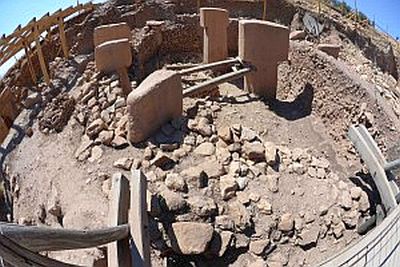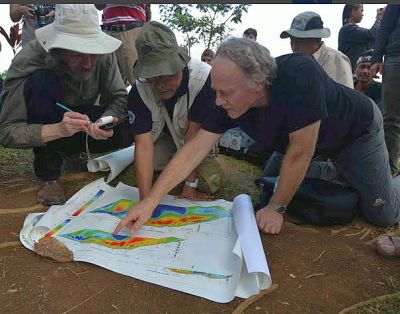“Could [Gobekli Tepe] be the fabled “Hall of Records” of Atlantis? If Dr. Natawidjaja’s geological excavation is allowed to proceed, despite strenuous attempts by local archaeologists to prevent it, then we should know the answer to that question, one way or another, by the end of 2014.” G Hancock

“Everything we’ve been taught about the origins of civilization may be wrong”, says Danny Natawidjaja, PhD, senior geologist with the Research Centre for Geotechnology at the Indonesian Institute of Sciences. “Old stories about Atlantis and other a great lost civilizations of prehistory, long dismissed as myths by archaeologists, look set to be proved true”.
From Indonesia to Turkey
I’m climbing with Dr Natawidjaja up the steep slope of a 300-ft high step-pyramid set amidst a magical landscape of volcanoes, mountains and jungles interspersed with paddy fields and tea plantations a hundred miles from the city of Bandung in West Java, Indonesia.
The pyramid has been known to archaeology since 1914 when megalithic structures formed from blocks of columnar basalt were found scattered amongst the dense trees and undergrowth that then covered its summit. Local people held the site to be sacred and called it Gunung Padang, the name it still goes by today, which means “Mountain of Light”, or “Mountain of Enlightenment”, in the local Sundanese language. The summit, where the megaliths were found arranged across five terraces had been used as a place of meditation and retreat since time immemorial, archaeologists were told, and again this remains true today. Continue reading

